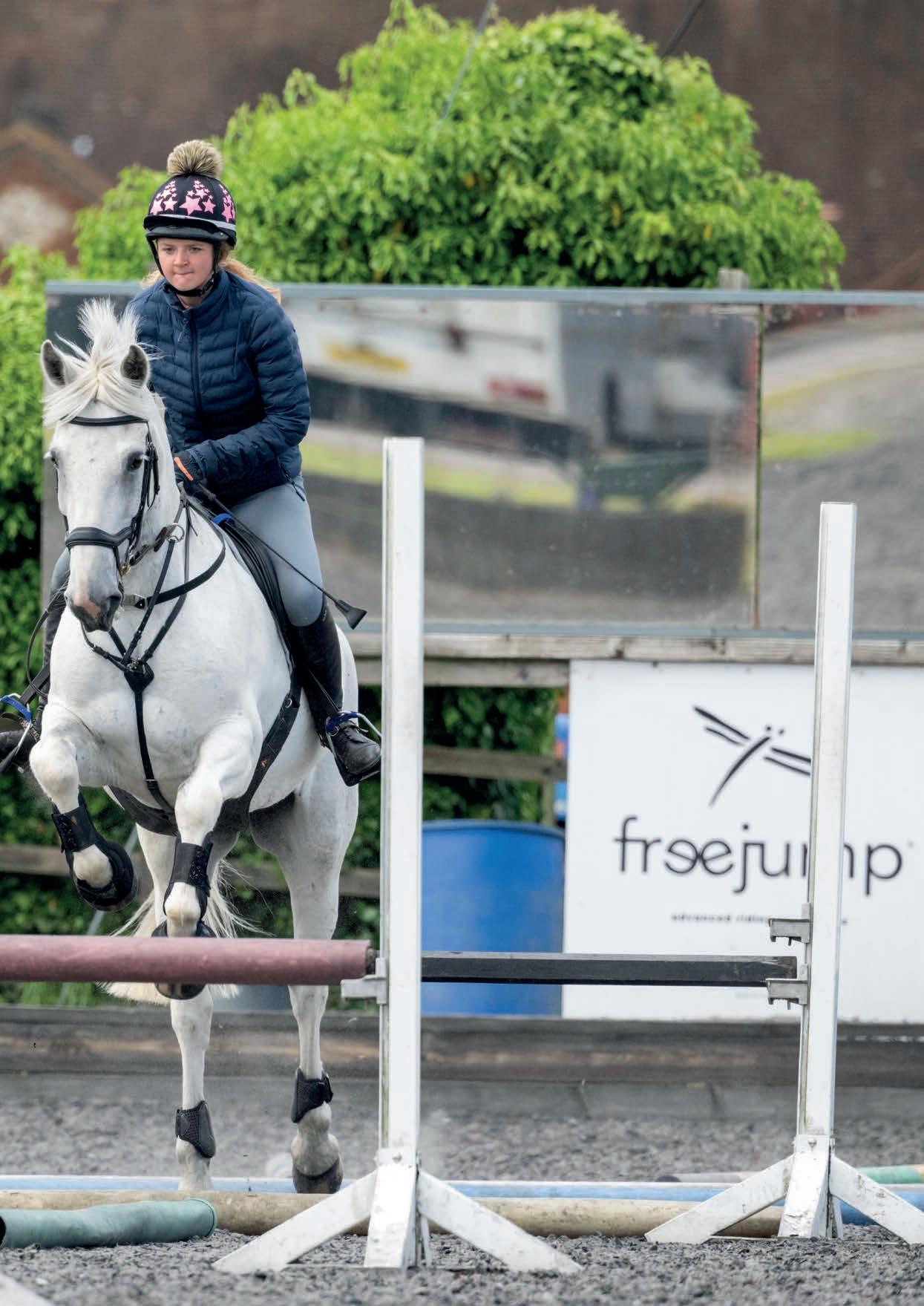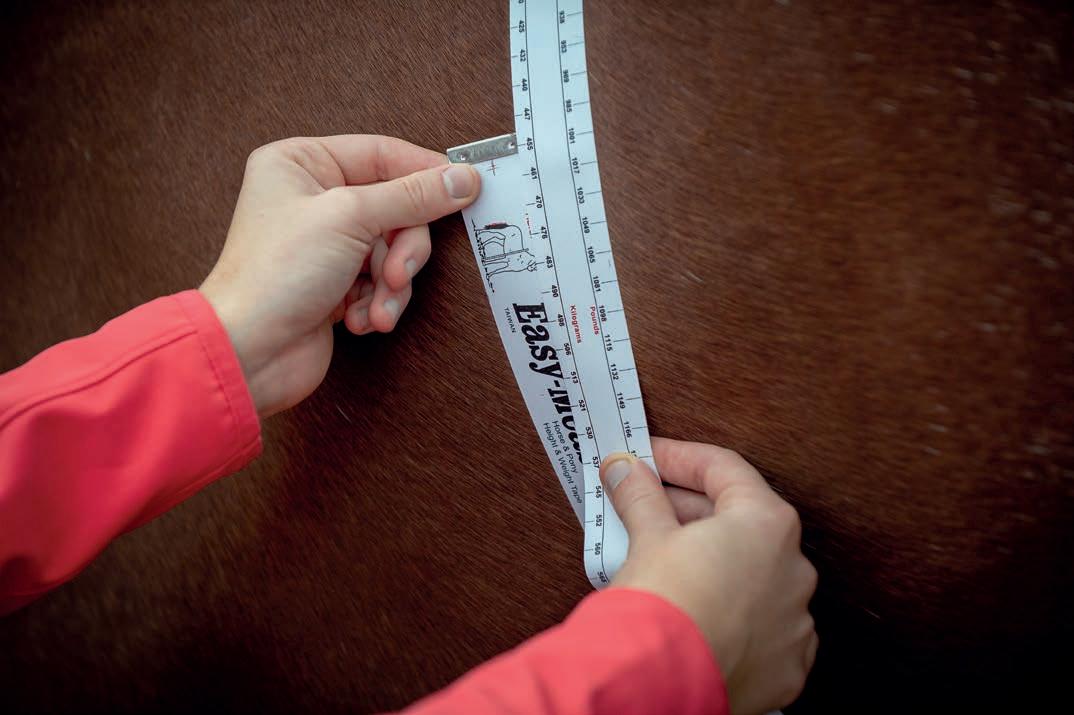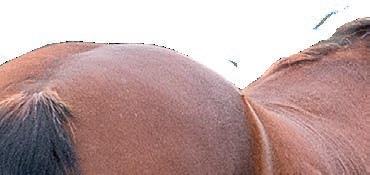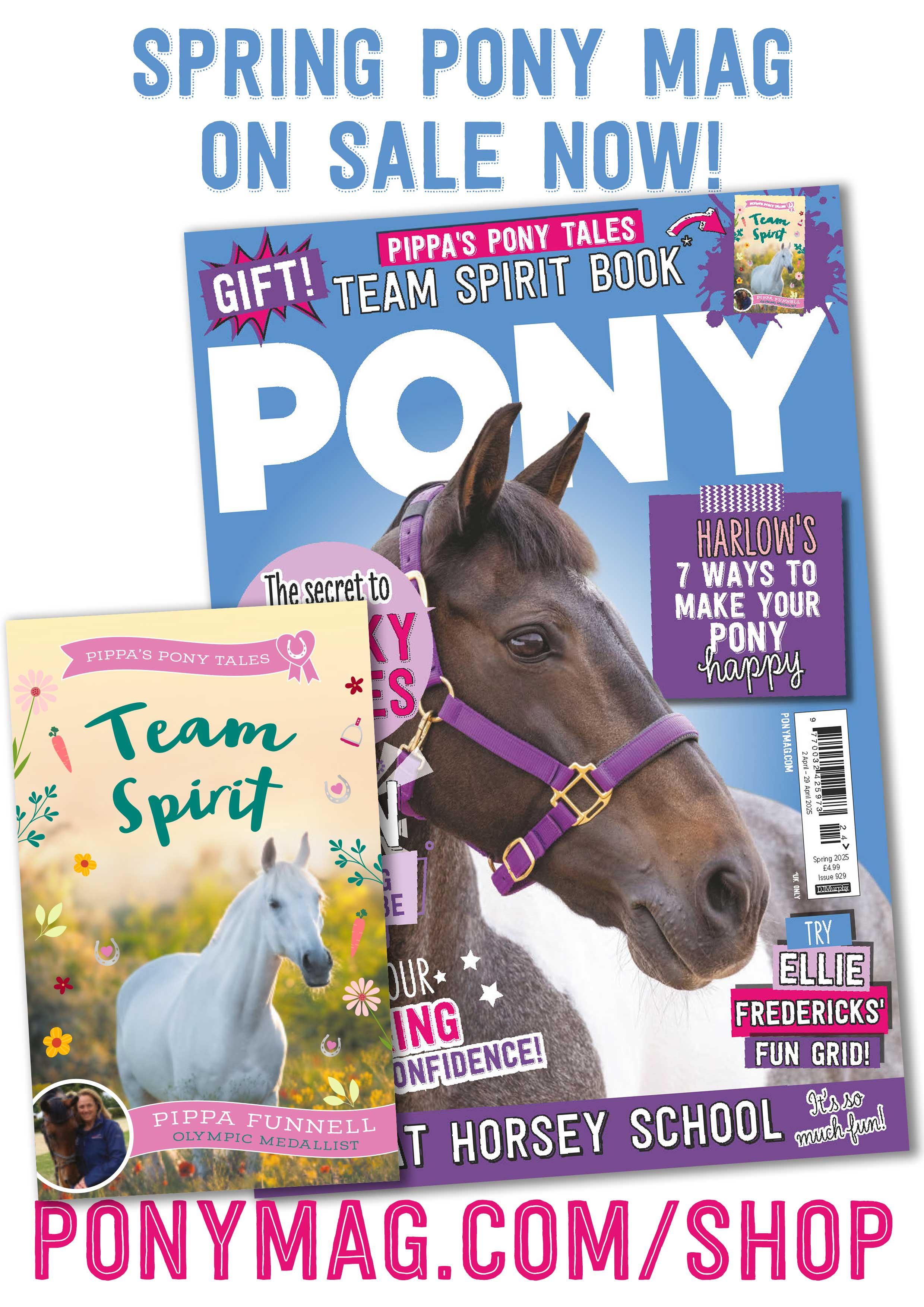















Ellie Fredericks is an eventer who has competed up to 4*.

Improve your pony’s agility and get ready to fly high with this mega grid!
IIn the second part of my skill-boosting series, we’re going to turn our polework layout from last month into an epic grid! While rhythm and straightness are important aspects of gridwork, adding in fences will test and improve your pony’s strength and agility, which means you’ll be set for success.
Incorporating gridwork into your pony’s exercise routine will help boost his strength and jumping skills!
Build this grid on the centre line so you can approach on both reins. Position the first three canter poles 2.7–3m apart, followed by your fences one stride apart (depending on your pony’s stride length, this will be 6.1–7.3m).
Place guide rails between the jumps, but start with them 2m apart and reduce to 1.2m after your pony has jumped happily through the grid once – if they’re too close and your pony wobbles off the line he might stand on one and injure himself!

6.1–7.3m
2.7–3m
Remember to adjust the distances to suit your pony’s stride length, otherwise it will be extra tricky.
Keep the fences lower than you usually jump to boost your confidence levels! You don’t need to be jumping big fences when training, as it’s all about developing strength and technique!
Follow our guide to hacking out confidently, whatever the situation!
Hacking is one of the best ways to enjoy time with your fave pony, but leaving the confines of an arena can sometimes feel a little daunting, and nerves can get in the way of all the fun. Whether you’re hacking in a group, cantering out in open spaces, exploring new routes or heading out onto the roads, confidence is key to having a safe, enjoyable hack.
No matter where you go hacking or who with, make sure you and your pony are each wearing at least one item of high-vis.
Riding with your besties is always super fun, but it’s important you feel confident and in control. What to do...

• let everyone in the group know if you feel worried so they can help you feel more confident and comfortable – try not to worry about being judged, everyone experiences nerves and it’s better to speak up than risk getting hurt or knocking your confidence
• chatting with your friends is a fab way of taking your mind off any anxious feelings, just make sure you keep paying attention to what’s going on around you!
• find the position that’s most suitable for your pony. For example, if he gets excitable in big groups, try to avoid staying at the back as this may encourage him to rush.

Ponies can pick up on how you’re feeling, so if you’re nervous, the chances are your pony will be, too! Try to relax by chatting in a calm voice – make up a story or tell him about your plans for the rest of the week!

Going zoomies is epic when you feel confident, but nerve-wracking if you’re not – especially if your pony’s feeling a little fresh! What to do...
• take your time and add in lots of walk-trot-walk transitions so you know you’re in control, and your pony is listening to your aids
• sing a song! This will remind you to breathe, which will help your body to stay relaxed
• try to avoid cantering towards home, as this will encourage your pony to rush back
• ponies have a fab memory and can remember their fave canter spots, so try to avoid cantering in the same place every time as he will begin to anticipate it
• believe in yourself! Cantering out in the open shouldn’t be any different to cantering in the arena
• remind yourself of all your previous positive experiences.
• don’t feel pressured – there will be other opportunities, so listen to your gut and, if it doesn’t feel right, give it a miss
There’s so much to explore, but how do you know whether it’s safe? What to do...
• work on familiarising your pony to different things you might come across out hacking so you’re ready for anything
• plan your route ahead of time and let an adult know where you’re going and how long you’ll be
• smile! Even if you’re nervous, it can help relieve tension and make you feel more confident
Read on f o r o ur guide to help your pony stay in shape!
It’s super important to keep your pony at a healthy weight, because it reduces the chance of illness and injury. If your pony needs to slim down, it’s essential to do this safely – we explain how!
Regularly checking your pony’s weight on a weighbridge or with a weightape allows you to quickly spot any changes. This means you’ll know if you need to adjust his diet and exercise routine to help limit weight gain or stop weight loss.
Use the same weightape every time to ensure your readings are reliable! Also, remember to write them down so you can see any changes.


Having an overweight pony can lead to health problems such as laminitis, equine metabolic syndrome and arthritis. did you know?did you know?
Ponies need a constant supply of forage to keep their digestive systems healthy. This is true even if a pony needs to lose weight. The good news is there are lots of ways to extend your pony’s eating time while helping him lose weight...
• grazing muzzles – they’re great for the field but have to be used all the time to be effective
• small-holed haynets – makes the same amount of hay last longer
• strip grazing – reduces how much grass your pony has access to
• track systems – can be set up around the edge of paddocks using electric fencing and encourage him to move more to find food and water, burning
• mix it up – swap out some of your pony’s hay for good quality oat straw. It takes more time to chew and has less energy
Ponies need to eat 1.5–2.5% of their bodyweight, but if your pony needs to lose a few kilos then stick to 1.5% – but no less! This is worked out on a dry matter basis, which means you’ll need to take the water content of his forage into account – it’s best to ask an adult for help to work it out because it can get a little confusing!


did you know?did you know?
Soaking hay for at least one hour helps to reduce calorie content. It might not be the most fun task, but it’ll help his diet plan!
The sugar levels in grass change with the seasons, and are usually highest in spring and early autumn. If your pony is overweight, and especially if he’s had laminitis before, take extra care with his turnout routine during these times, because more sugar means more calories, which isn’t good for his waistline! It’s a good idea to replace some of the grass in his diet with soaked hay, too.
